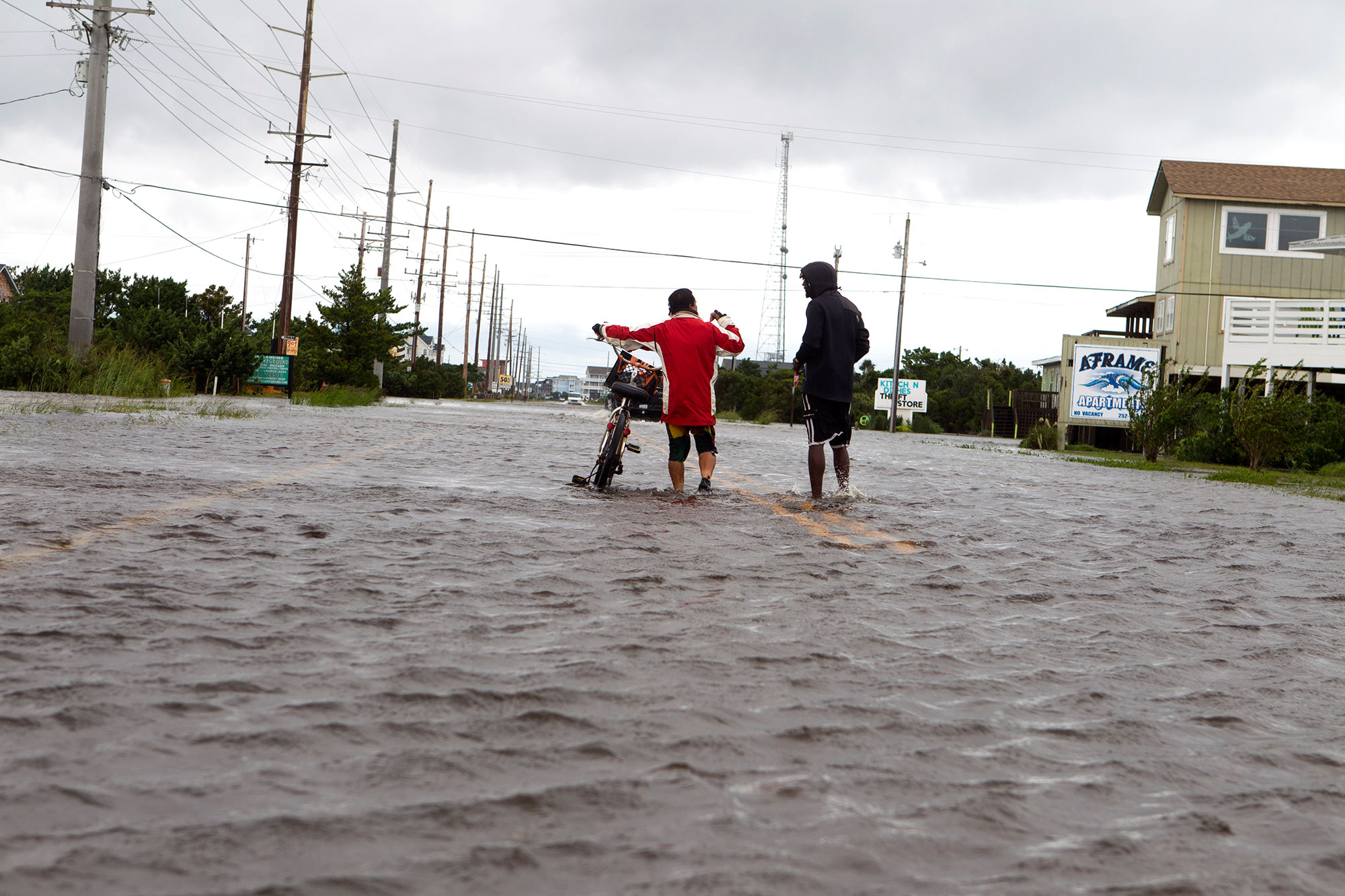Extreme flooding has struck almost every corner of the country over the past year, from rural areas in Tennessee and California to the Michigan suburbs and the streets of Brooklyn, New York. Floods have always been by far the most widespread and costliest weather disaster in the U.S., and they have only gotten worse as climate change has accelerated. Total damages from floods and hurricanes last year eclipsed $100 billion, according to data from the National Oceanic and Atmospheric Administration, or NOAA.
A new study published this week in the journal Nature Climate Change projects that the number of people in the U.S. who are exposed to flooding will almost double over the next 30 years — but not for the reasons you might think. Most new risk will come not from climate change but from population growth in areas that are already vulnerable to flooding. The findings underscore a hard truth with dire implications for climate adaptation policy: The lion’s share of U.S. flood risk does not stem from the changing nature of storms and seas, but instead from our decisions about where to build and where to live.
That’s not to say climate change isn’t playing a major role: The study’s authors found that climate change will render around 700,000 more people vulnerable to flooding by 2050, mostly as a result of rising sea levels and stronger hurricanes. The lion’s share of current flood risk is borne by low-income white communities in places like Appalachia, but the new climate-driven risk that will arrive by 2050 will fall hardest on Black communities. (People of color are more likely to live in flood zones overall.) Many of these are located in coastal cities or hurricane-vulnerable Southern states, which puts them right in the crosshairs of rising seas and whopper storms.
When the authors measured the role of future population growth on flood vulnerability, though, they found an even stronger effect. The report finds that population growth in flood-prone areas will put over 3 million more people at risk of flooding by 2050 — four times the increase that will result from climate change. Unlike the new risk that results from climate change, most of the new risk from population growth will come in places that don’t have very much exposure to flooding right now, from Arkansas to Kansas to Idaho. As cities and suburbs in these areas sprawl out onto untouched land, more people will put themselves in the water’s way.
“Yes, climate change will intensify floods on average across America,” said Oliver Wing, a researcher at the University of Bristol and the lead author on the study. “But the much more sensitive component is where people are going to be living. Because ultimately, a flood is only risky if there are people and property in the way of it.”
This study complements other recent research about the relationship between climate change and population dynamics, though it adds a concerning twist. A landmark study published last year in Nature found that more people are moving into flood-prone areas across the globe, ratcheting up risk levels worldwide; the study concluded that the world’s flood-prone population grew by as much as 25 percent between 2000 and 2015. Population data from the recent U.S. census shows that Americans are still rushing to vulnerable coastal cities like St. Petersburg and Fort Myers, Florida, and that more people than ever are living in the hurricane-prone Gulf of Mexico. The long-term demographic shift toward Sun Belt cities has yet to slow down.
According to a recent survey by the real estate company Redfin, almost half of Americans say climate change is a factor in their moving decisions, which suggests that people are growing more cautious about moving to places that have suffered the worst climate disasters. Even if Americans begin to move away from these places, though, they may only be laying the groundwork for future disasters.This danger is exacerbated by the fact that U.S. flood mapping is widely believed to underestimate risk: A 2020 New York Times analysis found twice as many flood-vulnerable properties nationwide as appeared on the official government flood maps issued by the Federal Emergency Management Agency, or FEMA.
The study points to a gaping hole in existing climate adaptation policy. In the past few decades, the federal government has pumped more and more money into adaptive measures such as home buyouts and living shorelines, which use natural materials to absorb flood impacts. The infrastructure bill signed into law by President Joe Biden last year contains billions of dollars more for such measures. If executed well, such projects could reduce risk in areas that are already vulnerable to flooding or stand to suffer from a changing climate. By erecting coastal storm surge barriers or buying out neighborhoods in the floodplain, the federal government can counteract some of the new climate-driven risk that Wing’s paper projects.
When it comes to forestalling future population growth, though, the policy solutions are much trickier. The federal government doesn’t have direct authority over local zoning codes, which means it’s up to local towns and cities to choose whether they permit development in flood-prone areas. From an economic perspective, most municipalities have strong incentives to allow this kind of development: More houses means more people, which means more jobs, which means more revenue from sales taxes and property taxes.
“There’s not really an established practice by which a town or village or city can say, ‘well, we’re going to lose population from a particular area based on this increasing hazard, so what does that look like?’” said Mathew Sanders, a manager of the Pew Charitable Trust’s Flood-Prepared Communities initiative. In other words, governments don’t have much practice moving beyond a narrowly-focused pro-growth mentality.
Still, added Sanders, more development doesn’t have to mean more flooding.
“It’s not a fait accompli,” he told Grist. “We have enough landmass to accommodate everyone, so it’s about strategic decision-making.”
Sanders pointed to measures like the Federal Flood Risk Management Standard, an investment guideline just reinstated by the Biden administration that sets standards for what can be built in floodplains with federal money, as an example of how the government can channel resources toward safe development. He also said that new tools like the First Street Foundation’s Flood Factor mapping tool should help developers make decisions about flood risk without relying on outdated FEMA maps.
“The conclusion that the study draws — that is a possible outcome,” says Sanders. “I don’t think that has to be the ultimate outcome.”
But the risk posed by future growth means that climate adaptation is far more complicated than just moving to high ground. Reducing flood risk will require not only intensive federal investment but also a sea change in local policy. There are examples of such policies already, such as the resilience-based zoning code implemented in Norfolk, Virginia, but in most of the country it’s still business as usual. For as long as that’s the case, said Wing, the cost of flooding is going to keep going up.
“The majority of [flood] risk is historical risk — risk that has failed to be dealt with right across decades of policy failure,” he told Grist. “The compound risk [of climate change] is interesting, but the bigger problem is not adapting to the problem in front of us.”




